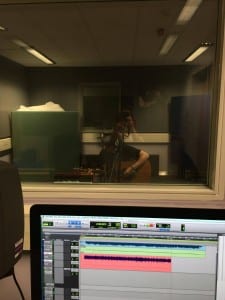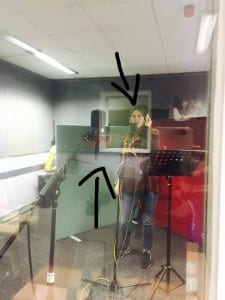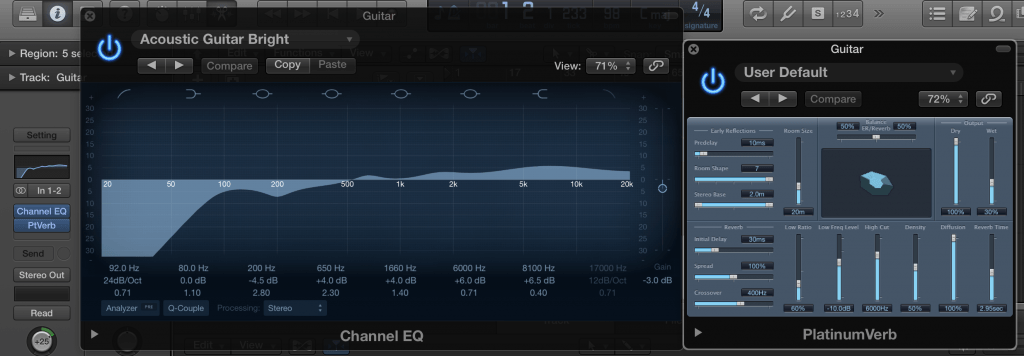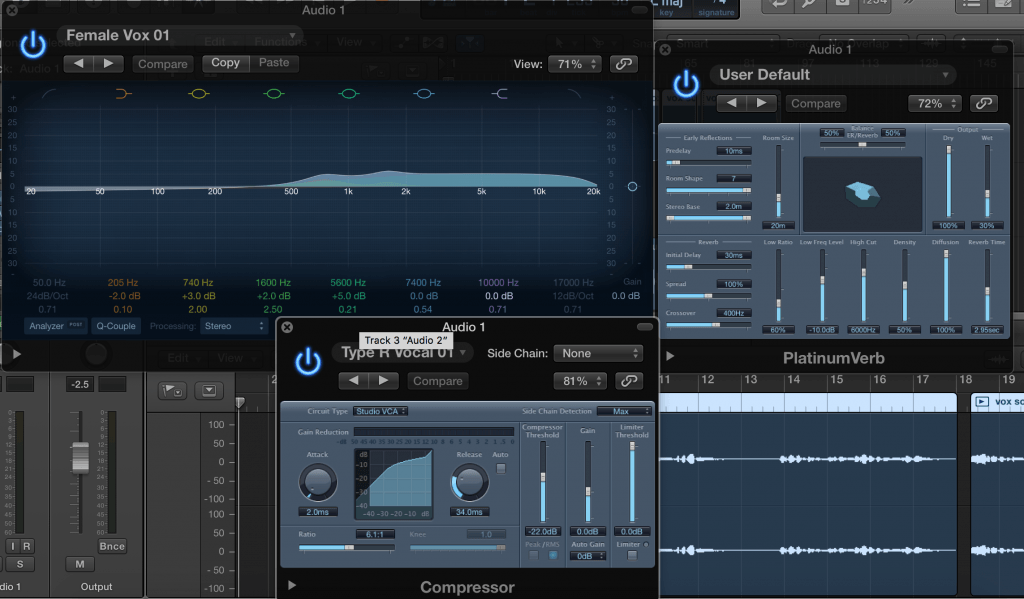For the recording, I decided to set up in the Radio Drama studio. Reason being, this was a studio I’d used a few times before and one which I felt more comfortable in using, and it was also the one which had the most time available.
For the setup of the studio room, I used two AKG 414’s. Condenser mics we’re d efinitely the right choice here, as the captured the delicate nature of the songs more than a dynamic would. I set one mic up on the opposite side of the room facing me and one close mic. An article on ‘Cakewalk’ backs this up in their article “10 Microphone Placement Techniques for Acoustic Guitar”. They use this technique saying “This configuration is typically used in conjunction with some closer microphones” and that “general room ambience becomes far more noticeable when using a set of room microphones.” This ambience was important as we wanted to give this as much as a live feel as possible and natural ambience would only emphasise this more.
efinitely the right choice here, as the captured the delicate nature of the songs more than a dynamic would. I set one mic up on the opposite side of the room facing me and one close mic. An article on ‘Cakewalk’ backs this up in their article “10 Microphone Placement Techniques for Acoustic Guitar”. They use this technique saying “This configuration is typically used in conjunction with some closer microphones” and that “general room ambience becomes far more noticeable when using a set of room microphones.” This ambience was important as we wanted to give this as much as a live feel as possible and natural ambience would only emphasise this more.
I kept this setup for the vocal as well, only this time, we made a little booth out of the boards which were in the room to cut dead any natural reverb which would come back from the room.

Firstly, we got the guitars down, we recorded two takes, in case double tracking would be required for the guitars. Also for Miles, there was also a lead guitar part which was recorded as well.
3 of the songs I recorded with a click track except for “You, The Ghost’, which was difficult to keep to a click track as the song is quite choppy, therefore I recorded this without the click.
After this Lizzie came in and sang her parts to the guitar parts I had previously recorded. She was very efficient in the fact that she came in and recorded her parts almost in under 2 hours.
We originally tracked each of the audio on Pro Tools, to which I would save each individual track recorded and organise them into their own folders so I could easily find them when importing them into Logic. 
After a full day of tracking, we felt we had good enough quality recordings which we’re ready to be edited and mixed ready for production.
“10 Microphone Placement Techniques for Acoustic Guitar” – Cakewalk -https://www.cakewalk.com/Support/Knowledge-Base/2007013311/10-Microphone-Placement-Techniques-for-Acoustic-Guitar


 efinitely the right choice here, as the captured the delicate nature of the songs more than a dynamic would. I set one mic up on the opposite side of the room facing me and one close mic. An article on ‘Cakewalk’ backs this up in their article “10 Microphone Placement Techniques for Acoustic Guitar”. They use this technique saying “This configuration is typically used in conjunction with some closer microphones” and that “general room ambience becomes far more noticeable when using a set of room microphones.” This ambience was important as we wanted to give this as much as a live feel as possible and natural ambience would only emphasise this more.
efinitely the right choice here, as the captured the delicate nature of the songs more than a dynamic would. I set one mic up on the opposite side of the room facing me and one close mic. An article on ‘Cakewalk’ backs this up in their article “10 Microphone Placement Techniques for Acoustic Guitar”. They use this technique saying “This configuration is typically used in conjunction with some closer microphones” and that “general room ambience becomes far more noticeable when using a set of room microphones.” This ambience was important as we wanted to give this as much as a live feel as possible and natural ambience would only emphasise this more.
